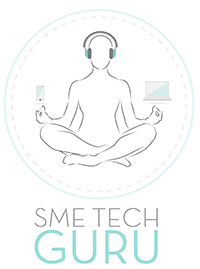South Africa is urbanising at speed. Every day, thousands of people move into cities in search of work, education and opportunity. However, the same forces that make cities engines of growth also create silent risks for health. Sedentary lifestyles, fast food on the go, long commutes and relentless stress are reshaping the nation’s health profile. Cardiovascular disease, once seen as a disease of affluence or old age, is now rising sharply among younger South Africans.
Dr David Jankelow, past president of the South African Heart Association, has described the country’s cardiovascular epidemic as a tsunami overwhelming both public and private facilities., with resources concerntrated in a handful of urban centres. The country’s ratio of just 200 cardiologists for 63 million people underlines the challenge, making it one cardiologist for every 315 000 people. Access remains uneven too, specialists are clustered in Johannesburg, Cape Town and Durban, leaving rural communities with almost no care.
The consequences of this gap are not confined to older patients. The rise of heart disease among young adults in their 20s and 30s is especially concerning. Once considered an ailment of later life, it now affects a generation that should be at its most productive, a reality underscored by recent global campaign such as World Heart Day and its call to action,‘Don’t miss a beat’. Hypertension, obesity and diabetes are becoming embedded in urban youth culture, with long-term implications not only for public health but for economic growth and social stability.
Balancing the pressures of rapid urbanisation with the realities of rising disease requires new approaches. Traditional healthcare systems cannot scale quickly enough, and the uneven distribution of specialists makes the divide even starker, and it is precicely where Artificial Intelligence (AI) is offering a way forward.
Two centuries ago, the stethoscope transformed medicine by turning an invisible condition into something doctors could hear, interpret and act on, giving doctors the ability to detect problems earlier and with greater accuracy, fundamentally changing how patients were assessed.
Like the stethoscope two centuries ago, AI makes the invisible visible. An ECG interpreted by AI can flag irregularities long before symptoms emerge, while a smartphone camera can capture vital signs in seconds, turning an everyday device into a diagnostic tool. In busy casualty wards, AI-powered triage systems help prioritise patients most at risk, reducing errors caused by fatigue or stress. Beyond the bedside, these technologies act as an equaliser, stretching scarce expertise, supporting clinics with limited budgets, and extending care into rural and informal communities.
However, algorithms alone cannot deliver this transformation, they need the digital backbone to travel, connect and scale. On a recent visit to Huawei’s innovation campuses in China, Blue Networks and Infrastructure (BNI), a leading South African provider of enterprise networking solutions saw first-hand how this backbone is already reshaping healthcare. From telemedicine platforms that connect specialists to rural clinics through 5G and 4K video, to Smart Ward and Smart Hospital systems that integrate IoT devices for continuous monitoring, Huawei’s solutions are demonstrating what a fully digital healthcare ecosystem can look like.
Remote training rooms equipped with high-definition video bring surgery demonstrations to classrooms, ensuring that the next generation of doctors can learn from leading specialists wherever they are. While not yet rolled out in South Africa, these deployments show what is possible when AI and connectivity converge and how such innovations could one day help bridge the country’s healthcare divide.
This vision is not too far removed from South Africa’s own realities. At Bara Taxi Rank in Soweto, the South African Heart Association recently demonstrated how AI-enabled tools can bring heart health screening directly to communities that rarely access specialist care.
Taxi drivers underwent quick, non-invasive checks that measured blood pressure, heart rate and other risk factors in minutes. Dr Jankelow, who was instrumental to the campaign, noted that taxi drivers, who keep the country moving, often face high health risks but limited access to preventative care, noting that this was the first heart assessment for the majority of the drivers, revealing a glaring gap in healthcare access for disadvantaged communities.
The same is true for South Africa’s rapidly growing cities. Urbanisation creates opportunity, but it also fuels the lifestyle risks, poor diet, long commutes, relentless stress, that drive cardiovascular disease. Without new solutions, the pace of urban growth will only widen the gap between need and access. AI, supported by the right digital infrastructure, offers a way to restore balance: extending scarce expertise, scaling preventative care, and meeting people where they are, whether in a busy clinic or a crowded taxi rank.
AI’s greatest value lies in this partnership between people and technology. Algorithms can flag risks earlier, process vast amounts of data and reduce routine burdens, while clinicians bring the judgement, empathy and decision-making that no machine can replicate. Together, they create a health system that is more preventative, equitable and resilient.


